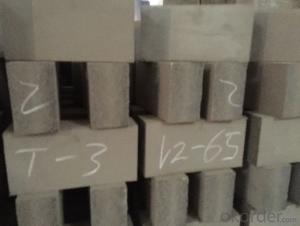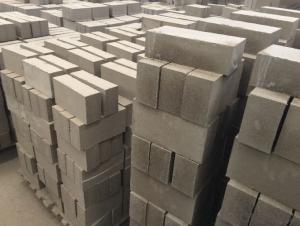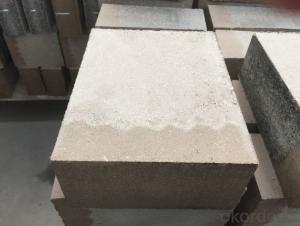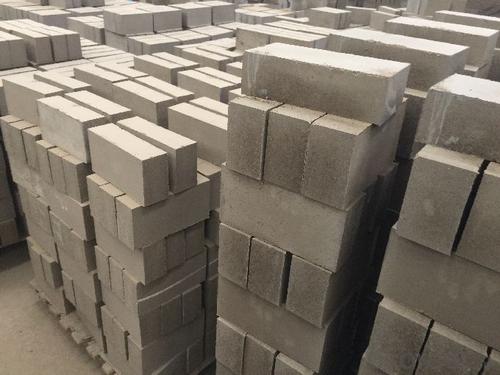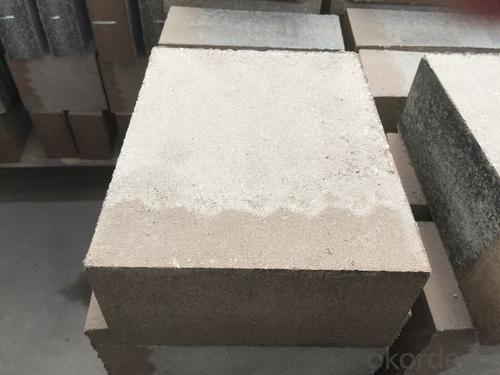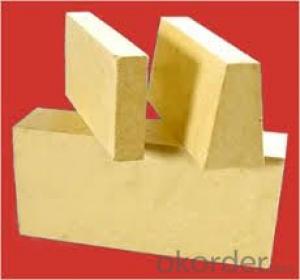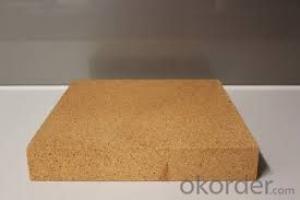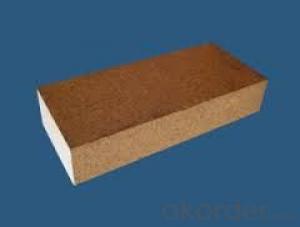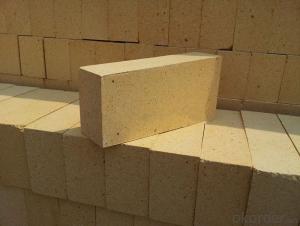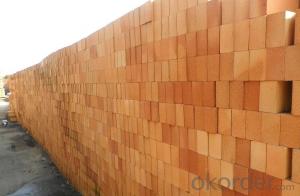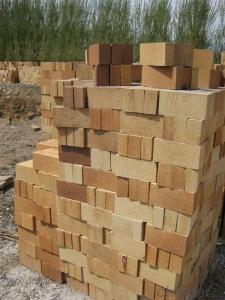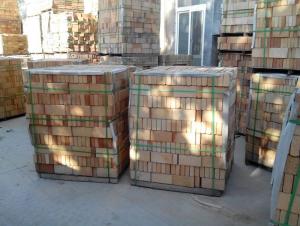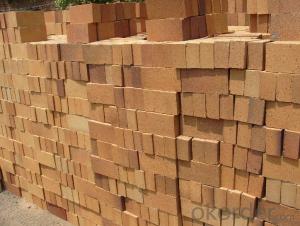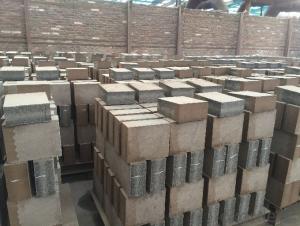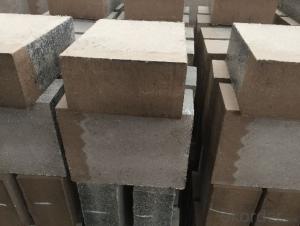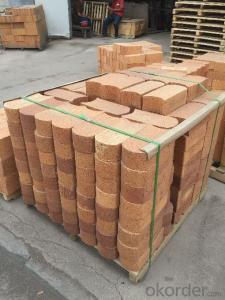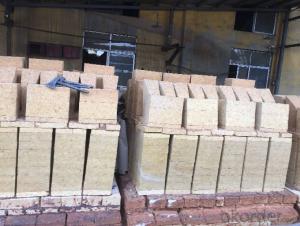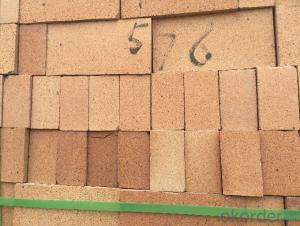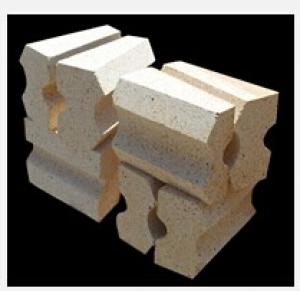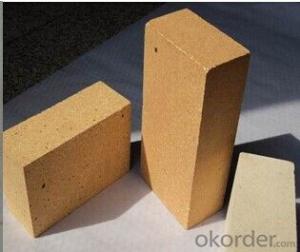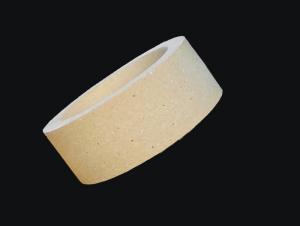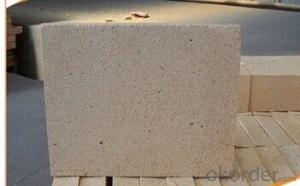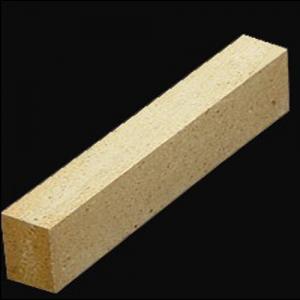Fireclay Brick with Al2O3 Content 75-80% Composite
- Loading Port:
- Qingdao
- Payment Terms:
- TT OR LC
- Min Order Qty:
- 17 m.t
- Supply Capability:
- 10000 m.t/month
OKorder Service Pledge
OKorder Financial Service
You Might Also Like
General Information
CMAX high alumina firebricks are classified according to alumina content ranging from 48% to 90%.
Feature
Low thermal conductivity
Excellent acid and base slagging resistance
High refractoriness
Excellent thermal shock resistance
Excellent mechanical strength
Application
CMAX high alumina bricks are commonly used in blast furnace, hot blast furnace, the roof of electric furnace, teeming ladle, rotary kiln, regenerator, etc
ITEM | UAL48 | UAL55 | UAL65 | UAL75 | UAL80 | UAL85 | ALP80 |
Refractoriness, ℃ | 1750 | 1770 | 1790 | 1790 | 1810 | 1810 | 1810 |
Apparent Porosity,% | 22 | 22 | 23 | 23 | 20 | 20 | 18 |
C.C.S, Mpa | 39 | 44 | 49 | 53 | 55 | 60 | 100 |
Refractories Under Load (0.2Mpa),℃ | 1420 | 1470 | 1500 | 1520 | 1500 | 1520 | 1550 |
Reheating Linear Change,% | 1450℃x2h 0.1~-0.4 | 1500℃x2h 0.1~-0.4 | 1500℃x2h 0.1~-0.4 | 1500℃x2h 0.1~-0.4 | 1550℃x2h -0.5~+0.5 | 1550℃x2h -0.5~+0.5 | 1550℃x2h -0.5~+0.5 |
Al2O3 Content , % | 48 | 55 | 65 | 75 | 80 | 85 | 82 |
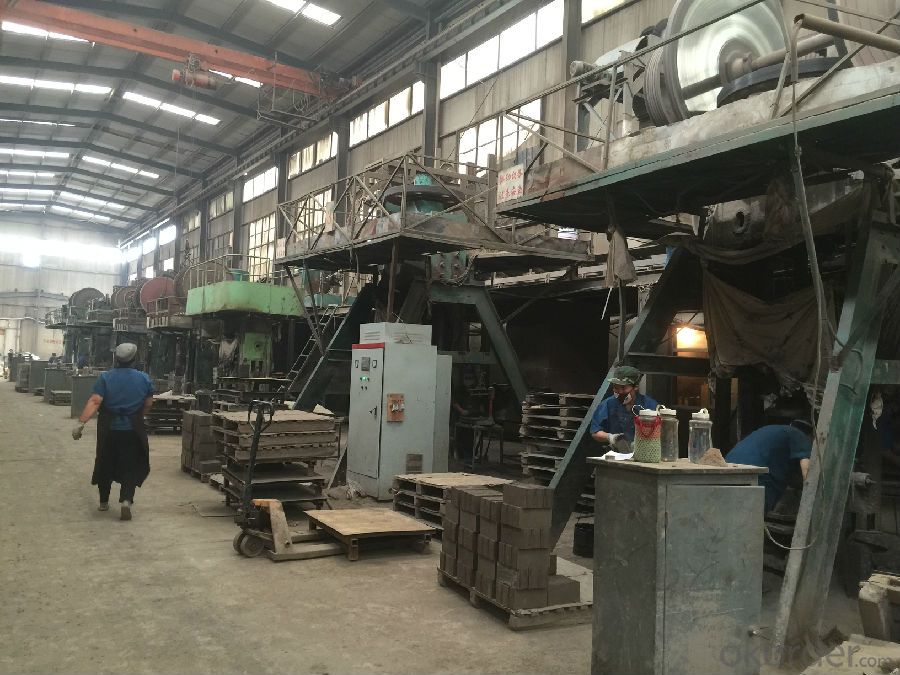
- Q: What types of building blocks do you have?
- The commonly used shapes are mainly divided into hollow bricks and perforated bricks. In particular to the green landscape construction, decoration materials, building construction, there are many such as: ordinary brick, lime sand brick, sintered shale brick, porous ceramsite concrete permeable brick, lawn brick, pervious brick, hollow glass brick, ceramic tile ground, refractory clay, concrete block wall, floor tiles, solar LED lamp, floor tile dry spray the rubber brick, grass planting brick, brick, split brick, road brick.
- Q: Are sintered brick concrete bricks?
- Fired bricks are not concrete bricks.According to the different production process of bricks into sintered brick and non sintered brick. Sintered brick in China has more than two thousand years of history, is still a very wide range of wall materials.
- Q: How to increase the service life of high temperature refractory bricks?
- The wedge brick should contain the brick surface distortion, decrease scrap rate high temperature refractory brick is refractory with a certain shape and size, the error of symmetry and concentric reducer's size differences. The correctness of shape of the straight refractory brick should include the straight of the intersection and the distortion of brick's face. Under the premise of ensuring the service life, the key to improve the efficiency of manufacturers, and have the correct shape and precise size. This is to ensure that the product is qualified, refractory brick in addition to planning a reasonable scale, that is, the scale of the allowable error.
- Q: What to do if refractory bricks saltpeter when they are used outdoor
- Efflorescence is usually dialysised from brickwork joints, dealing with the gap is ok These white substaince inside the pan tile: Cement efflorescence efflorescence is wow cake section from light leather intestinal common disease inumiya Hua building surface, according to their different causes and manifestations, there is pan cream, white, whitening, cream, on the walls and decorative surface erosion and other names, is the change of soluble saline alkali soil, adobe, brick, cement, mortar, concrete, masonry, ceramic tile, paint and other building materials with temperature, humidity and other external environment, in a water absorption, water transfer, water evaporation process with physical and chemical changes of the original building material damage disease phenomenon, erosion degree also has the very big difference there is a common, get damp, foaming, powder, drum, hollowing, cracking, spalling, mildew and crystallization phenomenon. Cement efflorescence may have some relationship with the quality of the cement, sand, water, air, temperature, humidity, it is a common fault in building. Use cement to do the pebble shape, it also prones to the above problems: A layer of white stuff on the surface. Terms of settlement: Scrape the dust in brickwork joint, pointing again. Use special pointing agents, more resistant to corrosion, not easy to efflorescence.
- Q: several refractory brick of rotary kiln several is damaged, how many refractory bricks should be replaced?
- The life of refractory bricks in rotary kiln is generally short.
- Q: What bricks are used for constructting refractory bricks tunnel kiln what is the material of each burning zone brick
- Refractory brick tunnel kiln, but if you want fire magnesia-chrome bricks, it may soon be finished, but the energy saving effect is good, using mullite bricks to sinter high alumina brick tunnel kiln burning zone is ok. Of course, if sintering is different, the refractotry bricks require different the kiln shape of tunnel kiln, preheating zone and cooling zone use high alumina brick and clay brick. what kind of products will be sintered in the future, clay brick firing zone had better use alumina hollow ball brick and mullite bricks How high the daily design capacity to achieve, thermal insulation can not be ignored, if firing silica?brick, then I am afraid there are only few finished burning bricks, what 's the purpose of the actual operation of the tunnel kiln you will build Different design of tunnel kiln use different brick, generally sintering high alumina brick and clay brick require good kiln, the cost is also very different, for example, because although the cost is higher, in addition operation is very important for the using effect and service life of the furnace, but the design of kiln type must be reasonable, otherwise it can not reach the expected effect, for example, the highest sintering temperature to achieve
- Q: Red brick (solid clay brick) has been banned, why do few people know?
- Because everyone feels hollow brick is more advanced, it is for quality consideration only then change, won't be to think that regulation must use this, actually solid brick is better, won't have the risk of metope ooze water ~ but because environmental protection is not allowed to use
- Q: What is the perservation method for refractory bricks used for cement kiln?
- The hydration resistance ability is better than the alkaline materials, 1 years will be no problem if the environment is good, alkali-resistant bricks used in cement kiln brick refractory brick (magnesia-chrome brick, the preservative time will be longer, the remaining products should also be moistureproof. No matter what refractory materials, phosphate brick. If the package is complete, it must be stored in a dry and rain-proof environment, silmo brick. Anti-stripping alumina brick, if is not immediately used, it's necessary to take measures of moisture proof, such as spinel brick must be moisture-proof
- Q: can castable refractory replace refractory bricks in rotary?kiln?
- depend on where you use, rotary kiln is not a good place to use it. it can repair the kiln.
Send your message to us
Fireclay Brick with Al2O3 Content 75-80% Composite
- Loading Port:
- Qingdao
- Payment Terms:
- TT OR LC
- Min Order Qty:
- 17 m.t
- Supply Capability:
- 10000 m.t/month
OKorder Service Pledge
OKorder Financial Service
Similar products
Hot products
Hot Searches
Related keywords
